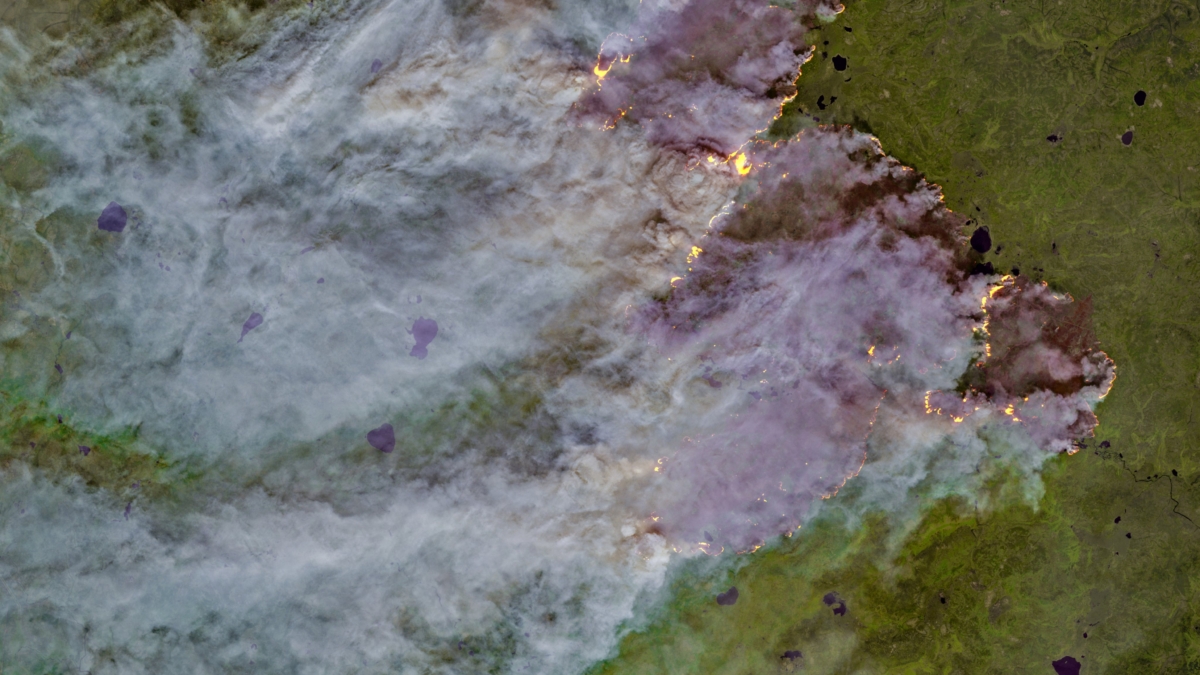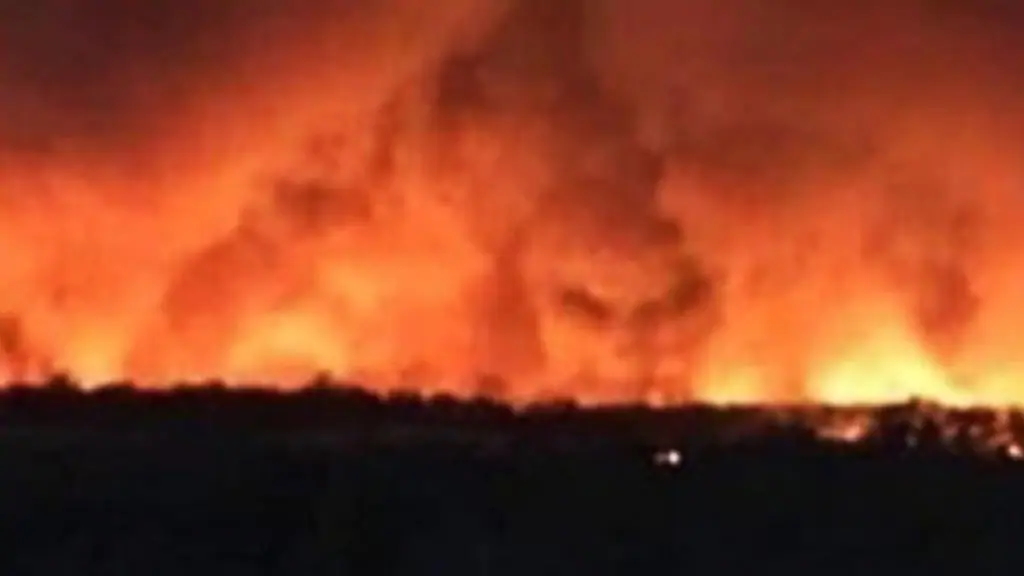UNICEF: More than twenty million children suffering in Horn of Africa as drought intensifies – Two million people displaced internally, 9.5 million livestock dead – “We fled hunger, but hunger followed us here”

NAIROBI, 22 December 2022 (UNICEF) –The number of children suffering dire drought conditions across Ethiopia, Kenya, and Somalia has more than doubled in five months, according to UNICEF.
Around 20.2 million children are now facing the threat of severe hunger, thirst and disease, compared to 10 million in July, as climate change, conflict, global inflation, and grain shortages devastate the region.
“While collective and accelerated efforts have mitigated some of the worst impact of what had been feared, children in the Horn of Africa are still facing the most severe drought in more than two generations,” said UNICEF Deputy Regional Director for Eastern and Southern Africa Lieke van de Wiel. “Humanitarian assistance must be continued to save lives and build the resilience of the staggering number of children and families who are being pushed to the edge – dying from hunger and disease and being displaced in search of food, water, and pasture for their livestock.”
Nearly two million children across Ethiopia, Kenya, and Somalia are currently estimated to require urgent treatment for severe acute malnutrition, the deadliest form of hunger.
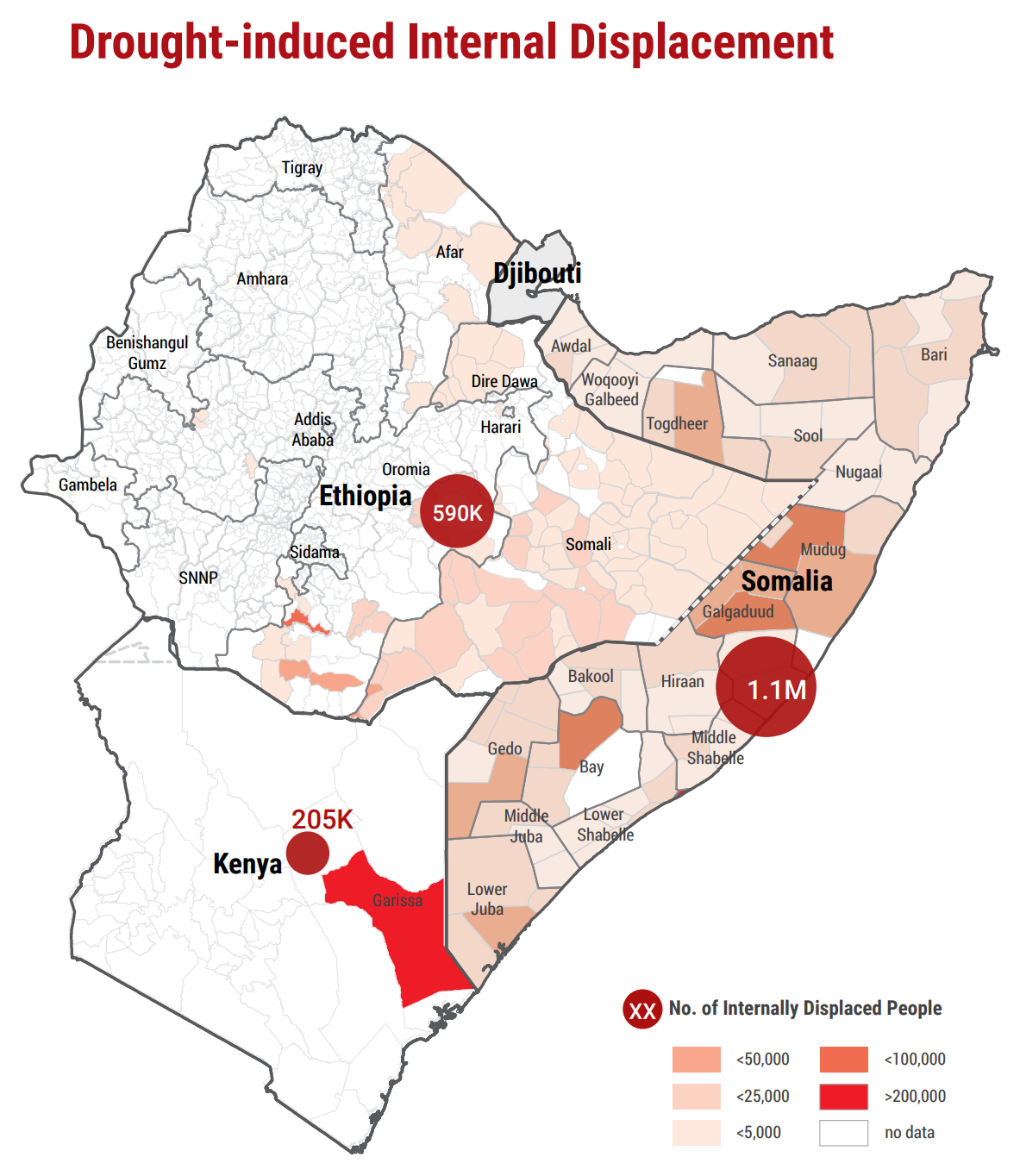
In addition, across Ethiopia, Kenya, and Somalia:
- More than two million people are displaced internally because of drought.
- Water insecurity has more than doubled with close to 24 million people now confronting dire water shortages.
- Approximately 2.7 million children are out of school because of the drought, with an additional estimated 4 million children at risk of dropping out.
- As families are driven to the edge dealing with increased stress, children face a range of protection risks – including child labour, child marriage and female genital mutilation (FGM).
- Gender-based violence (GBV), including sexual violence, exploitation and abuse, is also increasing due to widespread food insecurity and displacement.
Thanks to the generous support of donors and partners, UNICEF continues to provide life-saving services to children and families across the Horn of Africa, while preparing for further shocks, building resilience and strengthening key services.
In 2022, UNICEF and partners reached nearly two million children and women with essential life-saving health care services, vaccinated almost two million children between the ages of 6 months and 15 years against measles, and provided safe water for more than 2.7 million people for drinking, cooking, and personal hygiene.
We fled hunger, but hunger followed us here. I tried to find help, but it was too late for Ahmed. He took two last breaths and that was it. He didn’t even cry.
Mahupo Ali, a mother of three children, who gave birth in a camp for displaced people but could not produce enough milk to feed her baby boy.
UNICEF’s 2023 emergency appeal of US$759 million to provide life-saving support to children and their families will require timely and flexible funding support, especially in the areas of education, water and sanitation, and child protection, which were severely underfunded during UNICEF’s 2022 response. An additional US$690 million is required to support long-term investments to help children and their families to recover and adapt to climate change.
“As governments and people across the world prepare to welcome a New Year, we urge the international community to commit to responding now for what might hit the Horn of Africa next year, and in the years to come,” says Lieke van de Wiel. “We need a global effort to mobilize resources urgently to reduce further devastating and irreversible damage to children in the Horn of Africa. We must act now to save children’s lives, preserve their dignity and protect their futures.”
Contact
- Matias Lindemann, UNICEF New York, Tel: +1 917 547 2846, Email: mlindemann@unicef.org
- Louis Vigneault-Dubois, UNICEF Africa Services Unit, Tel: +27 79 495 5938, Email: lvigneault@unicef.org
More than twenty million children suffering in the Horn of Africa as drought intensifies – UNICEF
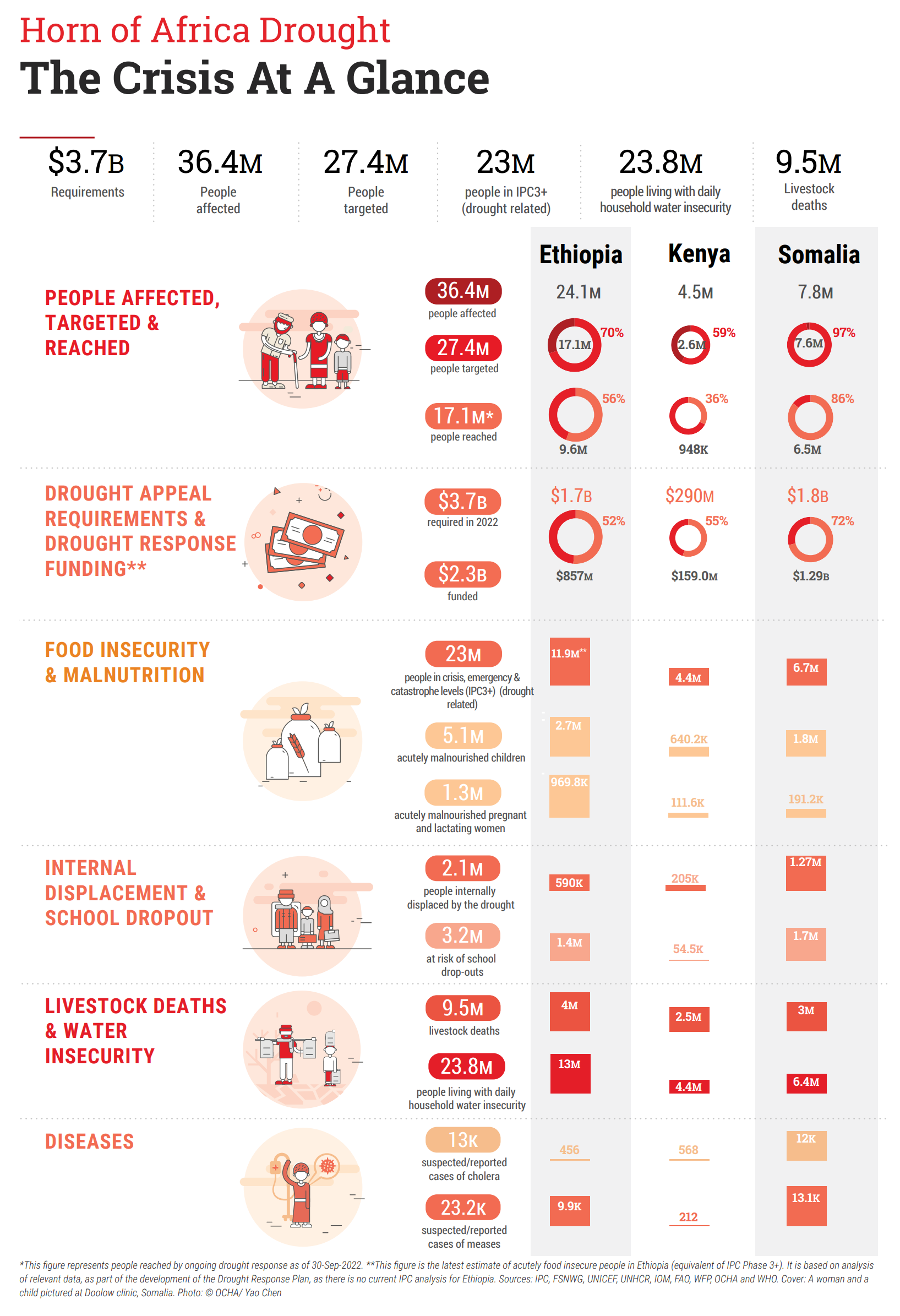
The Horn of Africa is facing an unprecedented drought emergency, with catastrophic consequences
28 November 2022 (OCHA) – Communities in the Horn of Africa are in the midst of a likely fifth consecutive failed rainy season—with the October – December 2022 rains beginning poorly and forecasts indicating they are likely to underperform—and may face a sixth failed season in March-May 2023. The October-December 2020, March-May 2021, October-December 2021 and March-May 2022 seasons were all marred by below-average rainfall, leaving large swathes of Somalia, southern and south-eastern Ethiopia, and northern and eastern Kenya facing the most prolonged drought in recent history, while the March-May 2022 rainy season was the driest on record in the last 70 years. The 2020-2022 drought has now surpassed the horrific droughts in 2010-2011 and 2016-2017 in both duration and severity and will continue to deepen in the months ahead, with catastrophic consequences.
The drought is ravaging affected communities, with needs spiraling
Across the Horn of Africa, at least 36.4 million people will be affected by the most prolonged and severe drought in recent history in the last months of 2022, including 24.1 million in Ethiopia, 7.8 million in Somalia and 4.5 million in Kenya. This includes over 9 million women of reproductive age (15 to 49 years) who face dangers to their health and aggravated risks of gender-based violence due to the drought, according to UNFPA.
Two districts in Somalia are projected to face famine from October to December 2022 and at least 23 million people are enduring high levels of acute food insecurity due to drought in Ethiopia, Kenya and Somalia. In Somalia, 6.7 million people will likely experience high levels of acute food insecurity (IPC Phase 3 or above) from October to December, including over 300,000 in Catastrophic (IPC Phase 5) conditions, while people in rural areas of Baidoa and Burhakaba districts and displaced people in Baidoa town of Bay region are at risk of famine.
About 11.9 million people in Ethiopia are severely food insecure due to the drought, according to the Mid-Year Review of the Humanitarian Response Plan. In Kenya, some 4.35 million people are expected to face acute food insecurity (IPC Phase 3 and above) between October and December 2022, according to the Long Rains Season Assessment. With the October to December 2022 rains beginning poorly, food insecurity will rise in the months ahead, and between 23 and 26 million people will likely face acute food insecurity due to the Horn of Africa drought by February 2023, according to the Food Security and Nutrition Working Group (FSNWG).
“There is no way we will survive the drought if we do not get assistance. People have already started dying. We will not be able to evade death as its already at our doors.” Daniel Lemalon told OCHA in Samburu, Kenya.
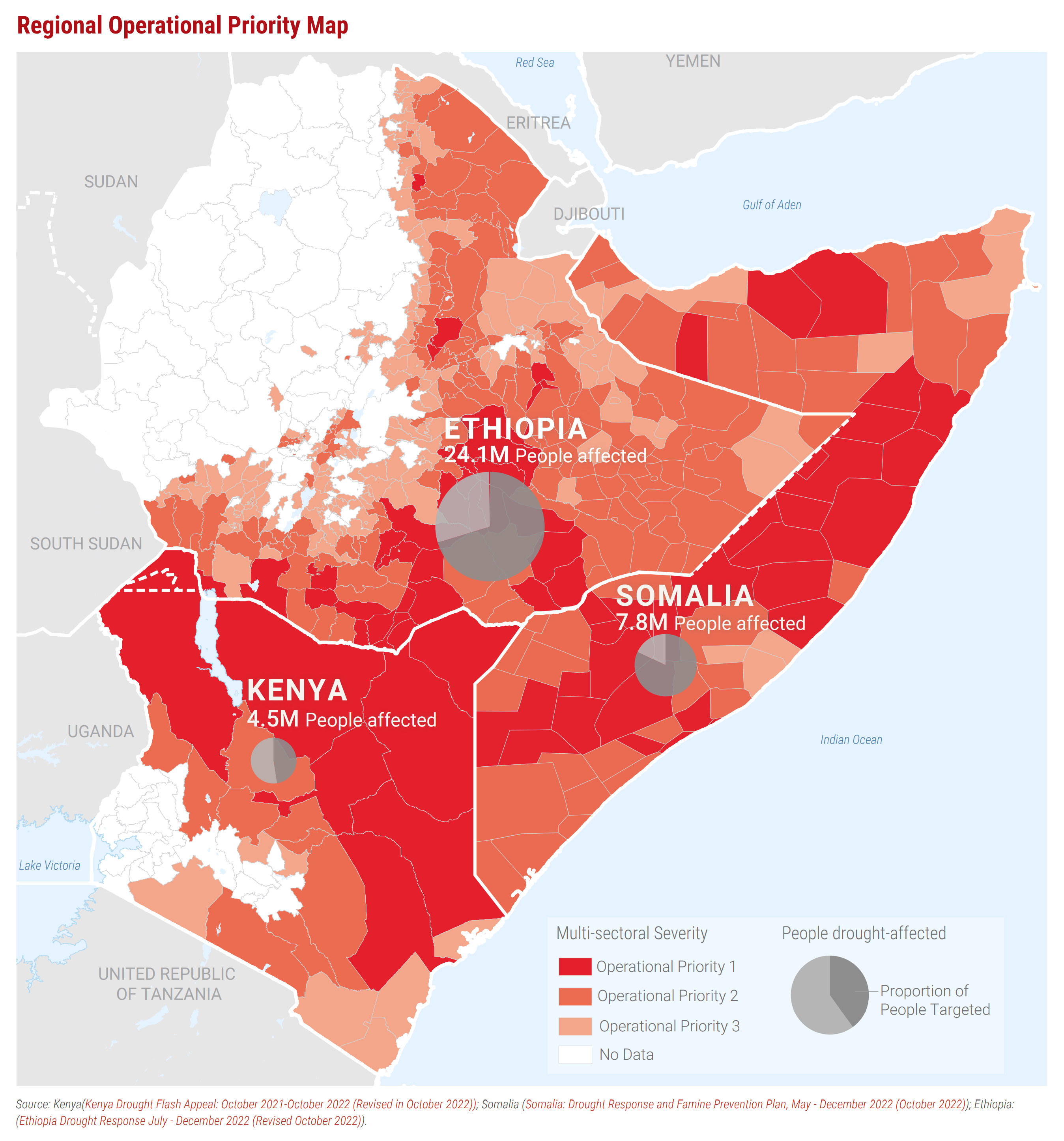
Over 9.5 million livestock—which pastoralist families rely upon for sustenance and livelihoods—have already died across the region, including 4 million in Ethiopia, 2.5 million in Kenya and over 3 million in Somalia, and many more are at risk. This translates to the loss of more than 120 million litres of milk, leaving 1.6 million children under age 5 across the region without a daily glass of milk, according to FAO, with severe consequences for their nutrition. In Kenya alone, the Government estimates the economic cost of livestock loss at more than $1.5 billion. The severity and duration of this drought present an existential threat to pastoralist communities in the hardest-hit areas, and more livestock are expected to perish in the months ahead, including at least 30 million weakened and emaciated livestock that are at risk in Ethiopia alone. Experience shows that it takes at least five years for a pastoralist family to rebuild their herd after a drought. However, with many families having lost all of their livestock during this drought, and droughts becoming more frequent and intense in the Horn of Africa, some may be forced to leave pastoralism.
A recent IOM assessment in Garissa county, Kenya, found that over 72,600 pastoralist households had lost their capital and livelihood opportunity.
“We fled hunger, but hunger followed us here. I tried to find help, but it was too late for Ahmed. He took two last breaths and that was it. He didn’t even cry.” Mahupo Ali, a mother of three children, who gave birth in a camp for displaced people but could not produce enough milk to feed her baby boy—told Save the Children in Baidoa, Somalia
Even if no famine emerges in Somalia, given the large number of people affected and the likely duration of the crisis, excess mortality during this drought could be as high as in 2011. As malnutrition soars in Somalia, more than 230 children have been buried in a single graveyard in Baidoa, according to Save the Children, and, across the Horn of Africa, the drought is driving alarming levels of malnutrition for children and women, threatening their lives and their futures. About 5.1 million children are acutely malnourished in drought-affected areas, of whom nearly 2.7 million are in Ethiopia, 1,640,000 in Kenya, and 1.8 million in Somalia. This includes about 1.4 million children who are severely acutely malnourished, including 705,000 in Ethiopia, 150,400 in Kenya, and 513,550 in Somalia. In addition, an estimated 1.3 million pregnant and lactating women are acutely malnourished, including 969,000 in Ethiopia, 111,600 in Kenya, and 184,400 in Somalia. In drought-affected areas, many women have sacrificed their own well-being and nutrition to care for their families.
Horn of Africa Drought: Regional Humanitarian Overview & Call to Action (Revised 28 November 2022)

